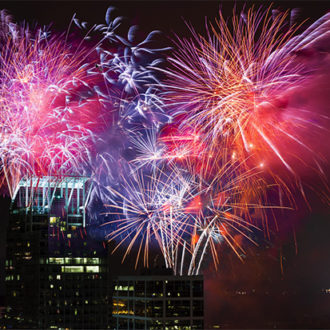Lighting a Wedding: Finding the Best Light All Day Long
I’ve written a bunch of articles about using specific lighting techniques, but never shown how I use lighting throughout the day. Well, today is your lucky day!
As pros, we tend to specialize in one area of lighting that we become particularly good at, but at the end of the day it’s our job to be specialists in all things lighting. In essence, we need to be specialists at being lighting generalists. Having a solid grasp on both available light and off-camera lighting is paramount to delivering a solid wedding portfolio to your client.
It’s not easy, what we do, and quite often we can work with a hundred different lighting scenarios in a 10-hour day, many times with only a few minutes to either find some nice light or make it on our own.
Getting Ready
When choosing my lighting, I also need to think about what I’m shooting. If I’m looking to get some fun moments while the bride and groom are getting ready, setting up a bunch of lights is certainly not the way to do it. Unfortunately, we don’t always get the best locations to shoot in, but we make it work. Here’s where some good, fast prime lenses play a great role; however, just because you can shoot wide open at f/2 doesn’t mean the light is great. Find the right angles to shoot from, or perhaps you need to open a curtain, turn on a light, or turn one off. Don’t be afraid to ask your subjects to move to better light if need be. (Caveat: I never claim to be a photojournalistic photographer, so purists may disagree with my last statement, and that’s okay.)
Bride and Groom Portraits
As wedding photographers, we’re constantly faced with the worst-case scenario; even the best-laid plans don’t always work out the way we want them to. Megan and Benny were one of my favorite couples I photographed this year. They’ve been together since they were teenagers, were as sweet as could be, and truly in love. We discussed their wedding day timeline, and even budgeted some additional time for their photos. Great, right? Yep, except their wedding was in December (sigh), so I suggested they get a car service to drive us around so we can hop in and out easily. They obliged, and we hoped for a nice balmy afternoon. Of course, we got dreary and 38°, plus a nice, chilly breeze (better known as raw). These guys really tried to rally, but it was freezing—no excuses kids, you make it work. With our trusty LumoPro LP160s all wired up and ready to go, we did the best we could for as long as they could handle it. We got a couple of good ones, but not as many as I’d like. Such is life, right? Wrong! Gotta keep trying.
I wasn’t sure what I was going to do, but I kept looking for some good indoor options. Unfortunately, the venue was tight and didn’t offer much but it was on the East River overlooking Manhattan, which offered a killer view but no decent choices to shoot from indoors. As we finished up their family pictures, I found a corner of the reception where there was a good view of the city, without too many distractions in the glass. Of course, we didn’t have a ton of time, so we grabbed a couple of video lights and shot the last portrait in the series. For me, some days aren’t about getting prize-winning images, but more about capturing their wedding as it was, giving them lots of options with portraits.
Ceremony
There’s nothing more distracting than a photographer blasting off a bunch of exposures with flash during a ceremony, especially if it’s a dimly lit room. Many times we’re told no flash photography during the ceremony. We could rely on the high ISOs our cameras have to offer and shoot a bunch of available light shots, granting us grainy, unflattering images, or we could add just a touch of video light to brighten things up and give a much better result. Here, we used a small LED dialed down almost to the minimum setting. It’s much less distracting and takes advantage of the light that’s available.
Recession and Reception
Switching hats again, right before the end of the ceremony, I’ll throw my flash back on the camera and cover their recession shots, and into the first dance. Keeping it simple finding the best way to direct the camera flash is the way to go here. Sometimes I’ll use a small STO-FEN diffuser on top, and other times I’ll point the flash into the ceiling.
Of course, whenever possible, we’ll pull out our off-camera flashes and try to make some magic. Having an epic background like this below makes it easy, but you have to make some pretty light, too.











